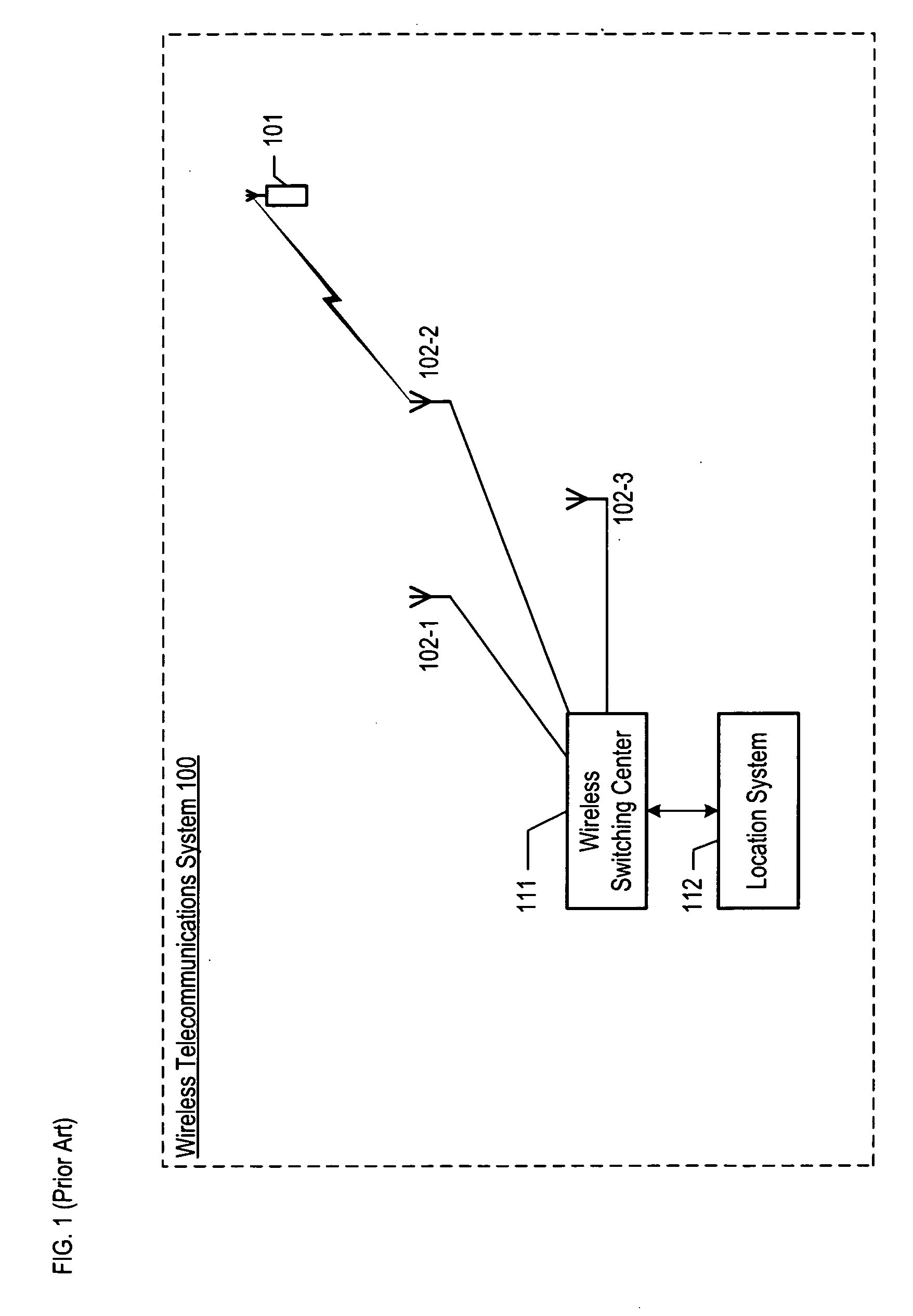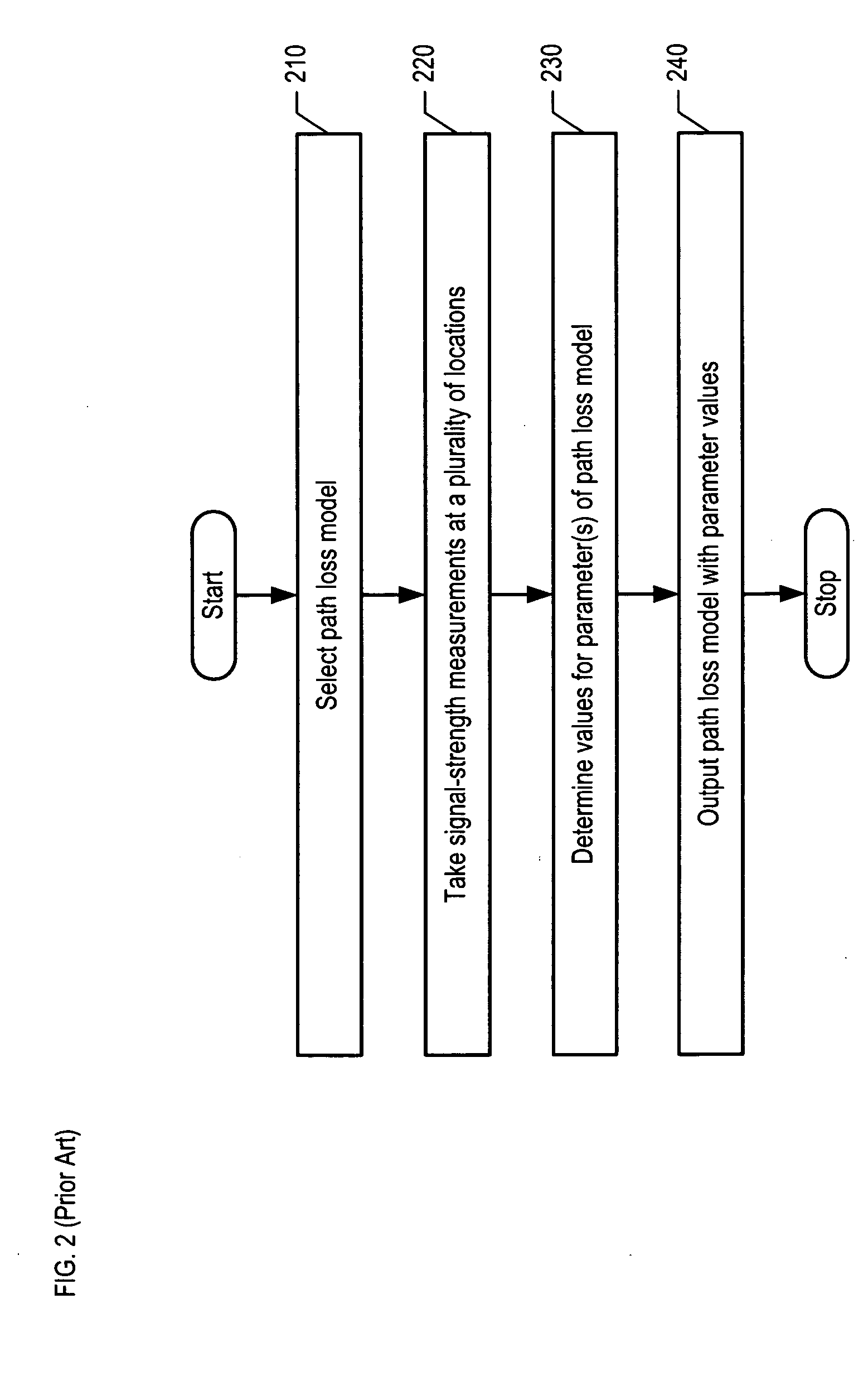Electro-magnetic propagation modeling
a propagation modeling and electromagnetic technology, applied in the field of telecommunications, can solve the problems of high cost, inability to accurately predict the location of the path, and inability to accurately predict the path, so as to achieve the effect of convenient tuning, efficient computer implementation and calculation, and admissibility
- Summary
- Abstract
- Description
- Claims
- Application Information
AI Technical Summary
Benefits of technology
Problems solved by technology
Method used
Image
Examples
Embodiment Construction
[0054]FIG. 3 depicts a flowchart of the salient tasks performed in accordance with the illustrative embodiment of the present invention. It will be clear to those skilled in the art, after reading this disclosure, which tasks depicted in FIG. 3 can be performed concurrently or in a different order than that depicted.
[0055] At task 301, an path-loss model is cast in the matrix model framework as depicted in Equations 14a and 14b. [p1p2⋮pM]=[a11a12⋯a1Na21a22⋯a2N⋮⋮⋰⋮aM 1aM 2⋯aMN][x1x2⋮xN](Eq. 14a)p→=A x→(Eq. 14b)
[0056] Model matrix A comprises coefficients aij, wherein iε{1,2, . . . , M} and jε{1,2, . . . ,N}, and wherein coefficients aij have any type of values (e.g., cardinal numbers, non-integer values, etc.) that are based on a particular propagation model and a particular geographic area. Parameter vector {right arrow over (x)} contains tunable parameters of the propagation model, and path-loss vector {right arrow over (p)} contains the path-loss measurements or pre...
PUM
 Login to View More
Login to View More Abstract
Description
Claims
Application Information
 Login to View More
Login to View More - R&D
- Intellectual Property
- Life Sciences
- Materials
- Tech Scout
- Unparalleled Data Quality
- Higher Quality Content
- 60% Fewer Hallucinations
Browse by: Latest US Patents, China's latest patents, Technical Efficacy Thesaurus, Application Domain, Technology Topic, Popular Technical Reports.
© 2025 PatSnap. All rights reserved.Legal|Privacy policy|Modern Slavery Act Transparency Statement|Sitemap|About US| Contact US: help@patsnap.com



